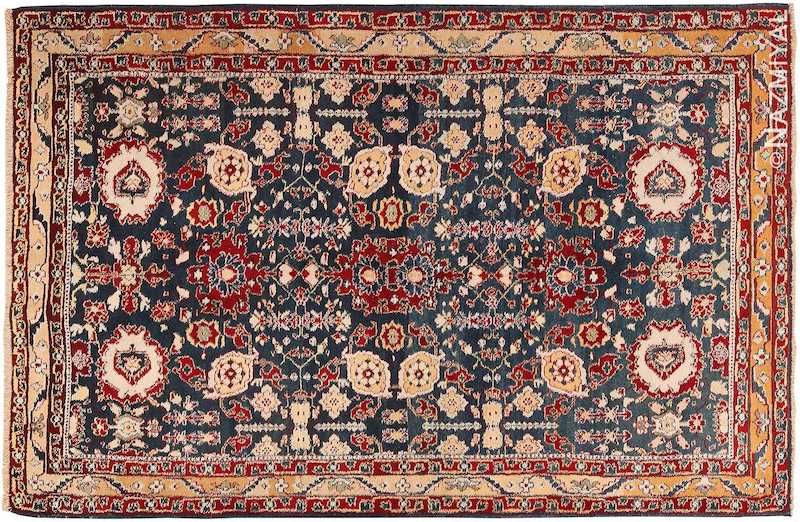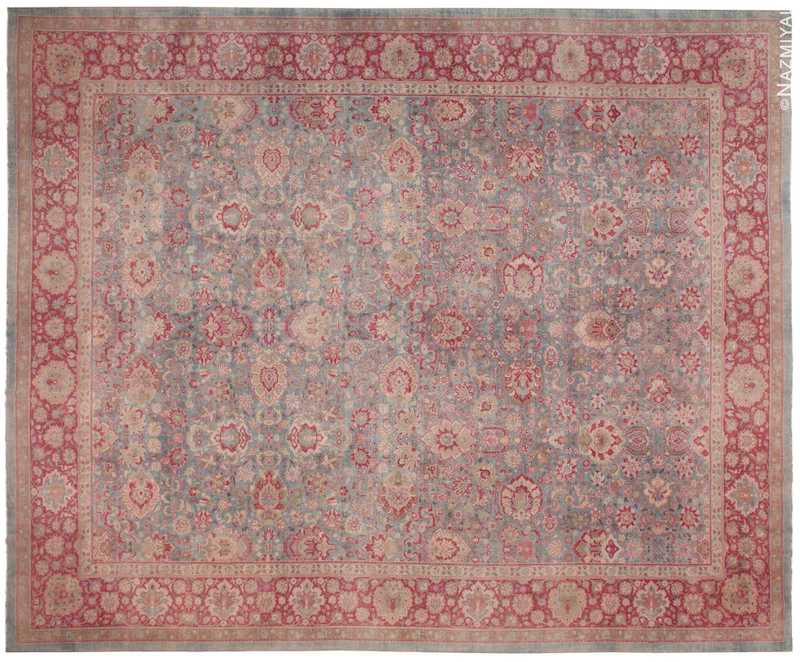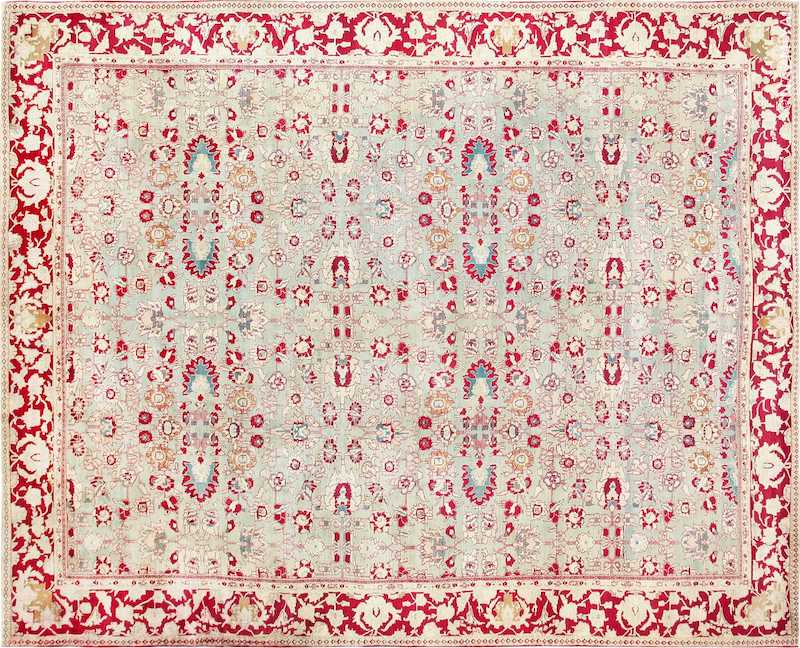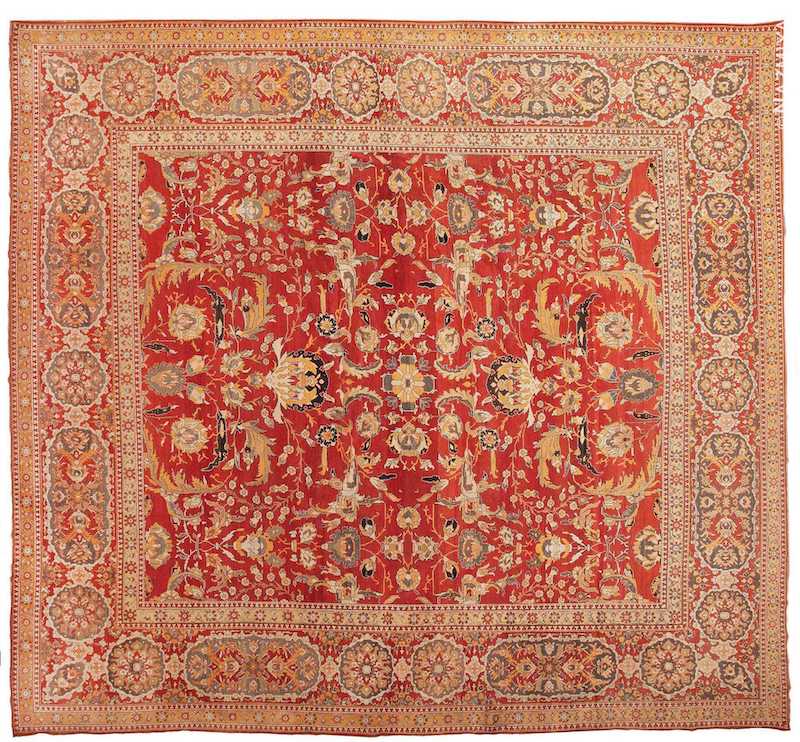The History of Weaving Rugs in India’s Jails
It is a well-known fact that people all over the world love beautiful things. From pottery, porcelain, silk, and ivory, exquisitely crafted pieces have always been highly sought after. Spanning thousands of miles, from the Americas and across India, to the eastern shores of China, imports and exports of goods offer the opportunity to obtain the finest international artworks. Things were no different in the nineteenth century when beautifully detailed handmade rugs were exported from occupied India. However, these incredible works of art were often the result of jail production and came from forced labor in India’s jail population. These Indian Jail rugs did not just offer Europeans a beautiful product, they also paved the way for British businessmen to exploit labor and profit substantially.
Mongol Weaving Origins
The history of weaving rugs in India goes back thousands of years and begins in the steppes of Central Asia, with a Mongol named Genghis Khan. His name is a familiar one; a warlord known for his ruthlessness, he was responsible for one of the greatest empires the world has ever known. At the time of his death in the early 13th century, the Mongol Empire was vast, stretching from the far East and into Central Europe.

Genghis Khan.
Although Khan left a trail of bodies in his path, he was also a skilled leader and loved many types of art. Because of this, artisans traveled with the Mongol army, resulting in Babylonian and Persian carpet weavers riding alongside the warriors, their skills soon becoming an integral part of every conquered territory. The art of rug weaving spread throughout Genghis’ massive empire, and in 1526 a distant relative of the Khan, Babur, the Mughal ruler of Afghanistan, invaded India, bringing carpet weavers there as well.
British Influence On Carpet Weaving in India
Carpet weaving had spread far and wide by the time the East India Company arrived in India in the 17th-century. Created to serve as a body for the British to participate in the Indian spice trade, they eventually became involved in politics and acted as an agent of British imperialism in India from the early 1700’s to the mid-1800’s. By the 18th century, a profitable trade had been established with Britain, with thousands of carpets sent back to the country every year. Due to the low technological requirements and high product value, coupled with strong demand, carpets appealed for obvious economic reasons.
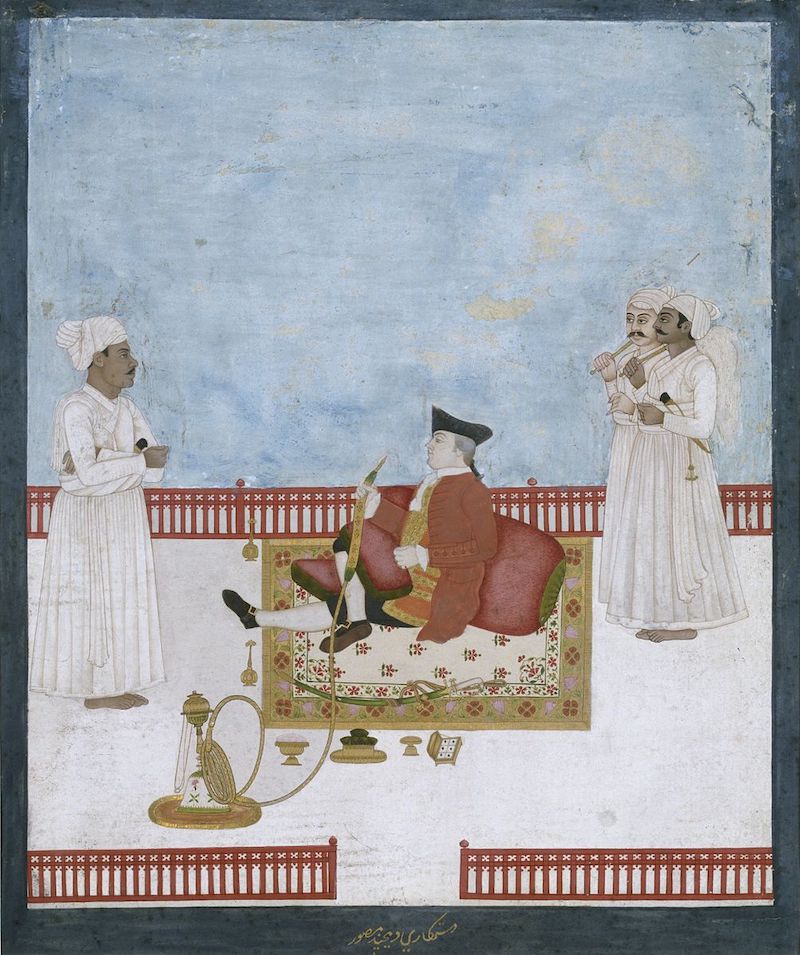
An East India Company official.
After widespread dissatisfaction with East India Company leadership, the result was an open rebellion. In 1858, the British government took possession of the East India company’s assets. It imposed direct rule, known as the British Raj, which lasted until India and Pakistan gained their independence in 1947.
The British Empire strengthened its hold on India in the last half of the 19th century, creating numerous opportunities for hundreds of British businessmen. During this time, prisons served as major centers of craft production and education. Carpet weaving was based in jails where inmates produced exceptional rugs using traditional designs.
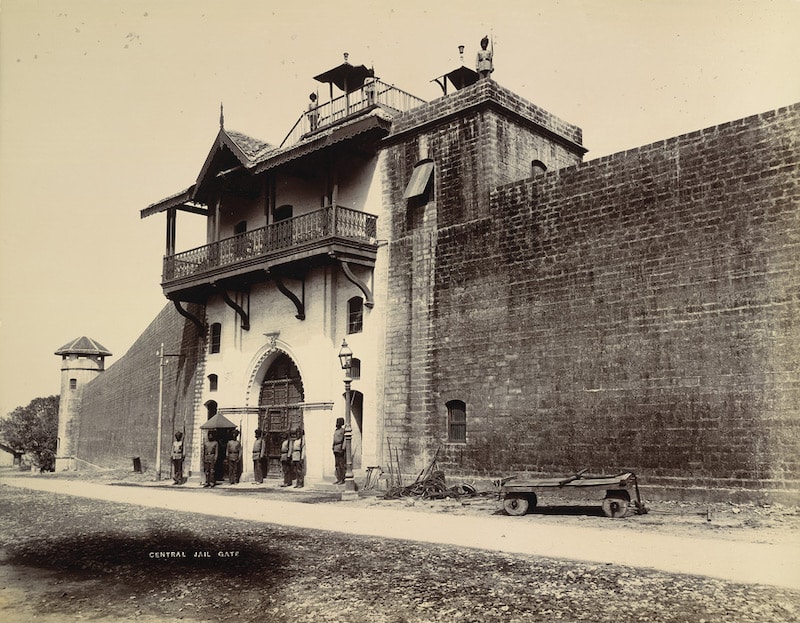
The main entrance to the Central Jail at Junagadh in Gujarat in the 1890s.
The Production Of The Indian Jail Rugs
The jail carpet weaving industry was widespread in India during the late nineteenth century. It was encouraged by colonial officials and prison authorities who needed productive and profitable (even lucrative) inmate “activities”. By this time, and into the end of the 20th century, most of India’s vast carpet production was monopolized by English companies. Jail rugs and other forms of inmate production offered practical economic goals: to earn money for the institution, train inmates in new skills and increase India’s income potential. Additionally, India’s cost of labor made it possible for the British to buy handmade high-quality rugs at more affordable rug prices.
The Punjab Colonial Government viewed the industry of prison rugs as an accomplishment in various ways. Carpet weaving was a way to discipline through handiwork and financed the incarceration through the sale of its own products. Though some workshops focused primarily on low quality and more commercial carpets, a lot of the production focused high end rugs and even luxury carpets. Jail supervisors preferred carpet weaving and knotting as a form of discipline for inmates, as they were particularly repetitive, monotonous activities. The industry was designed to discipline and reform prisoners, giving them marketable skills after release and producing income for the institution. The financial success of the jail rugs seemed to reinforce British views, and officials preferred prison industries over art schools, citing the fact that attendance and discipline were mandatory.
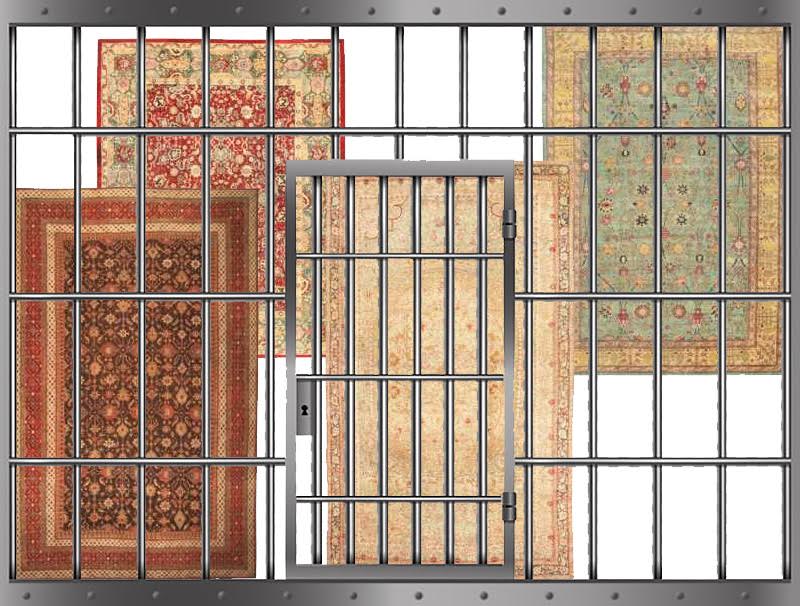
Mid 1800’s Jail Rugs Exhibition Explosion
The industry really too off in India during the mid-1800’s. This stems mostly from the influence of international exhibitions. From the 1850’s, jail rugs were regularly featured at international and domestic exhibitions, in Indian museums, and were often exhibited in a select category all their own. At the London International Exhibition of 1862, a carpet based on a traditional shawl design won a medal and received a London firm commission, inspiring other jail workshops to create “traditional and oriental rug” designs. Other jails started up workshops to meet the new demand as well.

An example of an Indian shawl.
The weaving quality of the Indian Jail rugs was exceptional, as they used the finest pure wool. The most famous of the weaving centers was the Agra Jail, close to the Taj Mahal, where an enormous carpet was gifted to Queen Victoria when she became Empress of India. Mostly reproducing historic designs, rug weaving by inmates reflected a wider effort to bring back traditional Indian artistry, supported by artists and officials such as George Birdwood and Lockwood Kipling. European designers and interior decorators hailed Indian carpets for their ornate trimmings and luxurious rug colors.
Indian carpet designs feature diverse Mughal and international influences. However, the most important external source of influence was British, a result of the numerous merchants and soldiers who occupied India. The most significant cause for the explosion of India’s jail rug industry was foreign market demand. Indian rugs achieved wide-scale attention in the West with jail carpets from Lahore being displayed in the 1862 London International Exhibition.
The American market for Indian rugs stemmed the 1893 Chicago World’s Fair exhibit where the carpets and rugs were on display. Production surged in the 1880’s, but the industry declined by the turn of the century. Today, a nineteenth-century inmate crafted jail rug can fetch hundreds of thousands of dollars. Though the history of Indian rug weaving is overshadowed by foreign occupation and forced labor, present day modern rug weavers still offer beautiful handwoven carpets in the traditional designs.
Here are some Indian rugs from the Nazmiyal Collection:
This rug blog about Indian Jail Rugs was published by Nazmiyal Antique Rugs.

